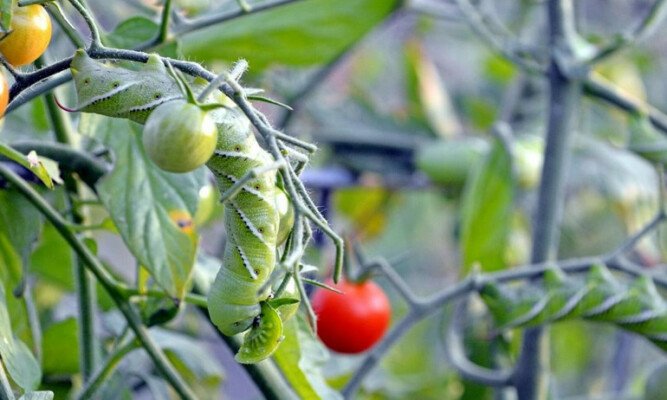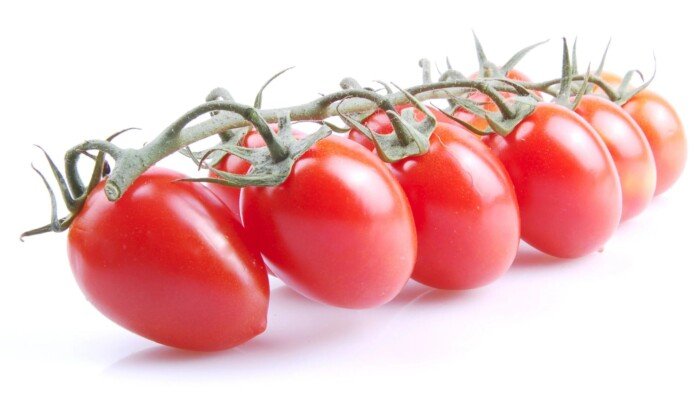|
Getting your Trinity Audio player ready...
|
Tomatoes, a staple in many gardens, often face the threat of diseases and pests that can mar your harvest. Whether you’re a seasoned gardener or just starting, understanding the common adversaries of tomato plants and how to combat them is crucial. In this guide, we will embark on a journey to comprehend various tomato diseases and pests, equipping you with the knowledge to prevent, identify, and effectively control them. Let’s fortify our tomato plants for a bountiful harvest.

Importance of Healthy Tomato Plants
Healthy tomato plants are the backbone of a successful harvest. When your plants are robust and thriving, they can better resist diseases and pests. The first step in preventing tomato troubles is to ensure optimal growing conditions. Adequate sunlight, proper watering, well-drained soil, and good air circulation are vital factors to keep your tomato plants healthy.
Healthy plants also have a robust immune system, making them less susceptible to infections. By providing the right nutrients through fertilization and ensuring a pest-free environment, you set the stage for a flourishing tomato garden.
Common Tomato Diseases and Their Symptoms
Understanding the symptoms of common tomato diseases is crucial for early identification and intervention. Diseases like Early Blight, Late Blight, Fusarium Wilt, Verticillium Wilt, and Blossom End Rot can wreak havoc on your tomato plants if left unchecked.
Early Blight manifests as dark spots on lower leaves, which gradually spread upwards, causing leaves to wither and die. Late Blight, on the other hand, shows irregularly shaped greenish-black spots on leaves, eventually leading to a mushy decay of the entire plant.
Identifying Tomato Pests
In addition to diseases, tomato plants are often targets of various pests. Common tomato pests include aphids, whiteflies, tomato hornworms, cutworms, and spider mites. These pests can cause severe damage to both the foliage and the fruit.
Aphids and whiteflies are tiny insects that suck sap from the plant, causing wilting and yellowing of leaves. The infamous tomato hornworm, a large green caterpillar, can devour leaves and even young fruit. Regular monitoring of your plants can help identify these intruders early, enabling swift action to control their population.
Implementing Preventative Measures
Prevention is the cornerstone of successful tomato cultivation. Begin by choosing disease-resistant tomato varieties suitable for your region. Crop rotation and proper spacing between plants can also prevent the buildup of soil-borne diseases. Implementing good garden hygiene, such as removing plant debris, is vital in averting disease recurrence.
Additionally, investing in high-quality soil, using organic matter, and avoiding over-fertilization can significantly contribute to disease prevention. Installing physical barriers like mesh netting can deter pests and ensure a healthier growing environment.
Organic Control Methods
Organic control methods offer an environmentally friendly way to manage tomato diseases and pests. Neem oil, a natural insect repellent, can help keep pests at bay. Diatomaceous earth, a powdered form of fossilized diatoms, acts as a natural insecticide, dehydrating and ultimately killing pests.
Companion planting, which involves growing specific plants near tomatoes to deter pests, is another organic approach. Marigolds, basil, and mint are excellent companion plants known for their pest-repelling properties.
Chemical Control Strategies
While organic methods are preferred, sometimes chemical control becomes necessary. Fungicides and pesticides, when used responsibly and as a last resort, can effectively manage diseases and pests. Always follow manufacturer instructions and consider consulting a professional before using any chemical solutions.
It’s important to choose the right product for the specific disease or pest you’re dealing with to ensure maximum efficiency. Furthermore, proper timing and application techniques are crucial to minimize the impact on the environment and other non-target organisms.
Beneficial Insects: Nature’s Pest Control
Harnessing the power of nature’s own insect predators can be an effective way to manage pests. Beneficial insects like ladybugs, praying mantises, and lacewings feed on harmful pests, helping to maintain a balanced ecosystem in your garden.
Attracting and providing habitats for these beneficial insects, such as planting nectar-rich flowers, can contribute to long-term pest control without the need for chemical interventions.
Monitoring and Regular Maintenance
Regular monitoring of your tomato plants is key to preventing and identifying issues early. Inspect your plants for signs of diseases or pests at least once a week. If you notice any abnormalities, take prompt action to address the problem. Trim affected parts, remove infected plants, or apply appropriate treatments.
Consistent watering and fertilization, along with ongoing vigilance, will help you maintain healthy tomato plants throughout the growing season.
Conclusion
By proactively addressing tomato diseases and pests through prevention, early identification, and effective control strategies, you can ensure a healthy and fruitful tomato garden. Implement a combination of preventative measures, organic and chemical control methods, and nature’s allies to fortify your tomato plants against any adversaries. With a vigilant eye and these strategies in place, you’re well on your way to a thriving tomato harvest.
You will find the following information useful:




